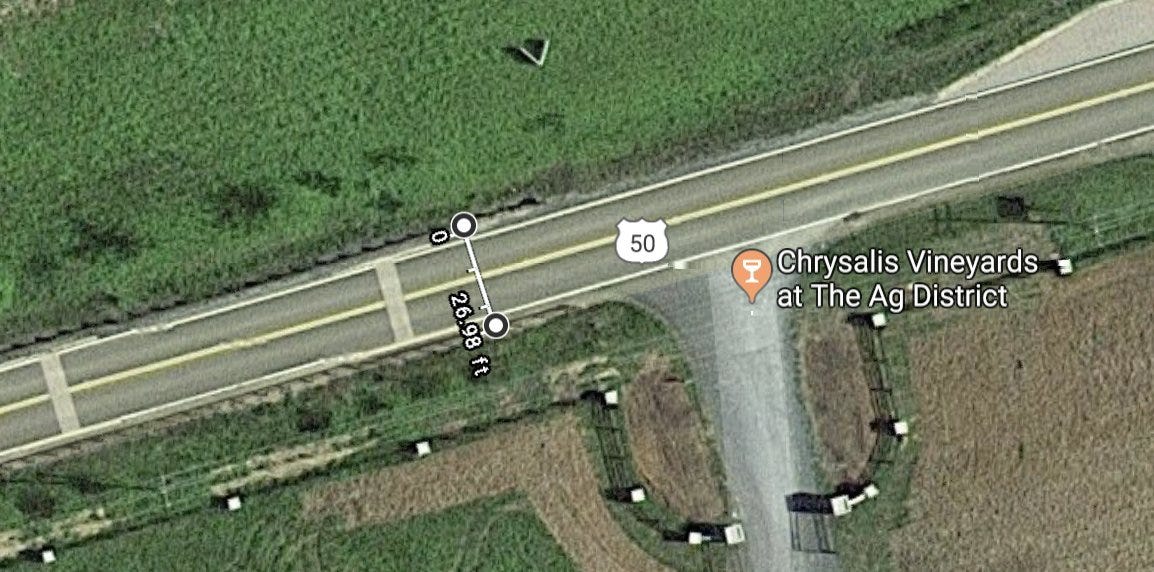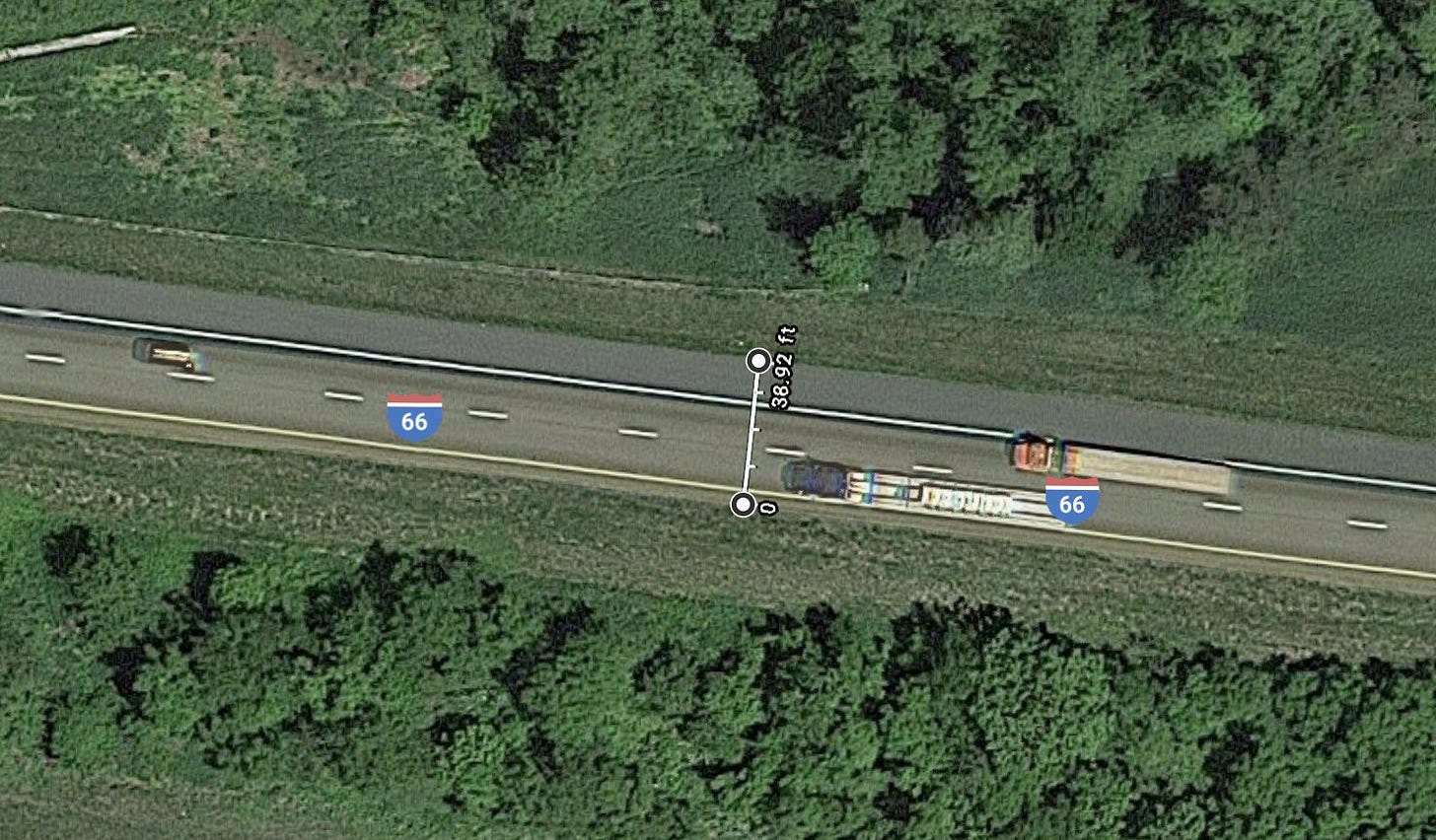I think this image says a lot about how much we spend on infrastructure, and also how artificially and unreasonably the land-use regime limits density and efficient use of land. (Maybe we should call it the land-disuse regime.)
This image is of an ordinary suburban street in the Reston/Herndon area, serving cul-de-sacs and subdivisions. It’s a little bit wider than the dead-end streets, but not by much. Its width rounds up slightly to 40 feet. What’s 40 feet? It’s enough to fit almost seven cars lined up (in driving orientation; not seven car-lengths). Here’s the street-level view. Notice how small the cars look in this expanse of pavement. There are parking lots with smaller dimensions.
Now take a look at this rural stretch of U.S. 50, which runs east-west and once served as the main access route into Washington, D.C. This is not an eastbound or westbound half. It’s the whole highway, one lane in each direction, probably original to when it was first built (if you continue east a bit, it widens up, which happened later as exurban development began to encroach.)
In other words, a major U.S. Highway, in its original width, is two-thirds the width of a pretty average suburban street today.
And now for the one that surprised me the most. This is the westbound side of Interstate 66, a bit east of Front Royal. Yes, it’s just one half of the highway. But still. Interstates are meant for high-speed, continuous travel. And this westbound side of a major Interstate route comes in a little bit narrower than that suburban street.
In a May 2020 podcast with Ben Kittelson, a government affairs consultant, Charles Marohn of Strong Towns reiterated a point that’s central to his approach to land use, focusing not on density per se, but on productivity:
I’ve had people say, you know, Chuck, you’ve actually ruined my life because I can’t go out now in the world without looking at these gaps and having them just hurt me. And you know that it does, it bothers me so bad when I see like, you know, these 200 – 300 foot gaps in the streetscape where there’s just nothing and we’ve just accepted that there’s nothing.
In other words, a suburban street two times as wide as it has to be isn’t just more dangerous, or even just more expensive to maintain, though it’s certainly both of those things. It also represents an opportunity cost, a squandering and foreclosing of growth and productivity. And that little over-wide street is a microcosm of our entire way of building things for the last 70 years.
There’s a commuter parking lot across the way from these subdivisions, which has been mostly empty for the last year. For the last few months, the county or the municipality has permitted food trucks there. There’s a coffee stand, and a barbecue joint, set up with their truck as well as a couple of large smokers. The food is made right there. Local suburbanites line up for it, and that dead space has become useful.
Yet this kind of flexibility is rarely just allowed, and when it comes up for discussion, it often gets NIMBY’d. Why? I’m just going to leave you with that. And take another look at that first image.








Good article. I have often wondered why many of the streets here in north Arlington are so wide. The county has done a lot of work installing bike lanes and widening median strips, etc. on many streets, but most still remain as wide as they were when I moved here in the late 80s. It seems an unfortunate waste of space.